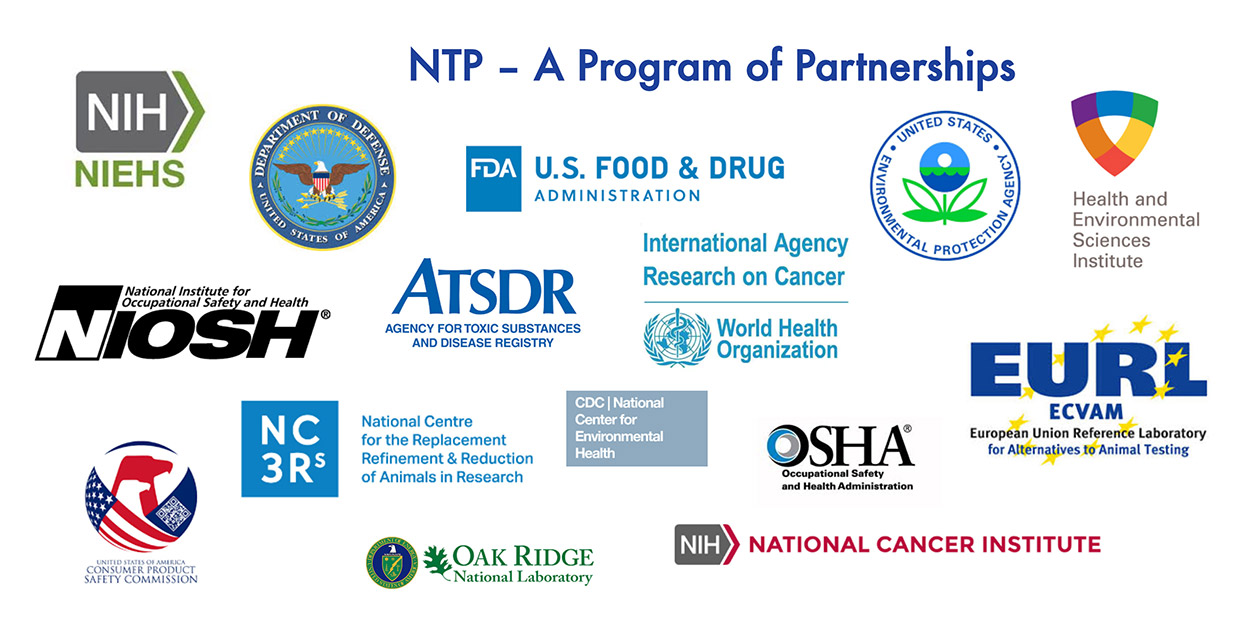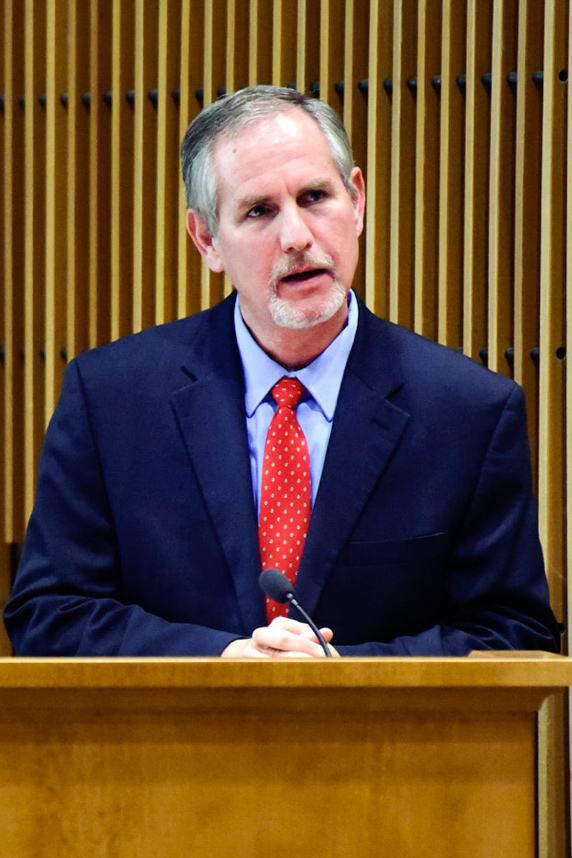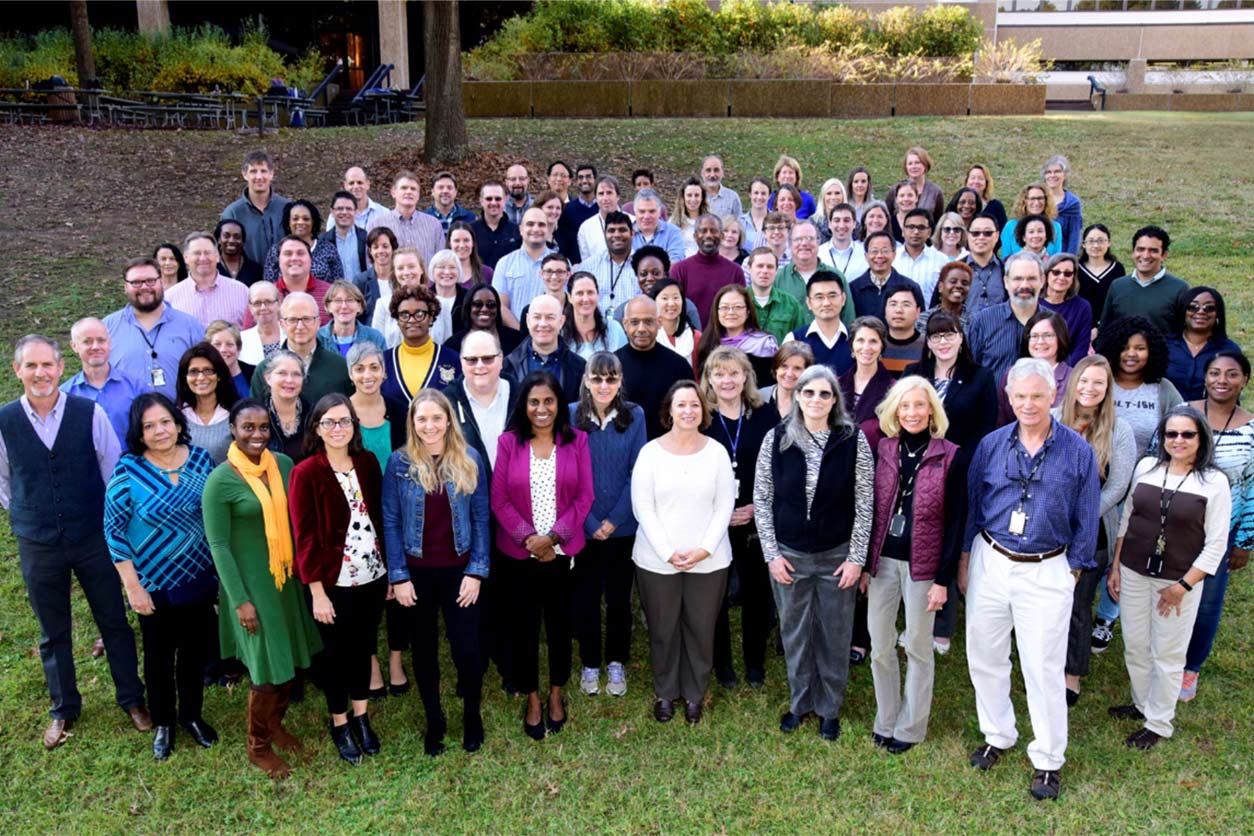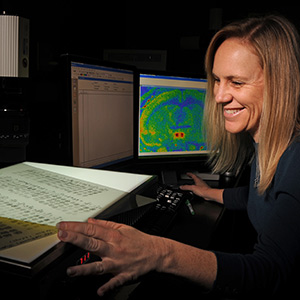
Four decades in, the National Toxicology Program’s (NTP) leaders reflected on past achievements and continuing progress in advancing the science of toxicology.
“In 40 years, NTP has become the most trusted source of toxicology knowledge worldwide,” said NIEHS and NTP Director Linda Birnbaum, Ph.D. She is the first toxicologist to head the program.
In its early days, NTP and toxicology generally relied on animal testing and focused on identifying individual chemicals dangerous to human health. A lot has changed in 40 years.
 NTP is an important focus for me because it is a problem-solving program — a truly translational component of NIEHS,” said Birnbaum. (Photo courtesy of Steve McCaw)
NTP is an important focus for me because it is a problem-solving program — a truly translational component of NIEHS,” said Birnbaum. (Photo courtesy of Steve McCaw)“Our greatest contribution to science is likely to come more from our efforts to quickly understand and predict the human biological effects of an agent,” said NTP Associate Director and Scientific Director Brian Berridge, D.V.M., Ph.D. “NTP is redoubling its efforts to conduct studies incorporating conditions that are relevant to humans, with capabilities that will build confidence in our predictions.”
Tox21
Much of NTP’s ability to be more predictive and to address increasingly complex environmental challenges has grown out of Tox21, created in 2008 and developed from the groundbreaking 2004 paper, “A National Toxicology Program for the 21st Century.”
Tox21 uses robots for high-throughput testing, to quickly screen a broader swath of potentially dangerous chemicals. The goal is to develop predictive models for adverse human responses to potentially thousands of substances.
“Toxicology is evolving, to a more data driven, more predictive molecular science,” said former Associate Director John Bucher, Ph.D. “Programs like Tox21 build the foundation for this transition.”
Tox21 has grown into a collaboration between NTP, the U.S. Food and Drug Administration (FDA), the U.S. Environmental Protection Agency (EPA), and the National Center for Advancing Translational Sciences (NCATS).
 NTP includes NIOSH, which is part of CDC, and NCTR, which is part of FDA. Its executive committee includes representatives from NIEHS, NCI, NIOSH, FDA, EPA, the Consumer Product Safety Commission, the Department of Defense, the National Center for Environmental Health, and the Occupational Safety and Health Administration (OSHA).
NTP includes NIOSH, which is part of CDC, and NCTR, which is part of FDA. Its executive committee includes representatives from NIEHS, NCI, NIOSH, FDA, EPA, the Consumer Product Safety Commission, the Department of Defense, the National Center for Environmental Health, and the Occupational Safety and Health Administration (OSHA).In the beginning
NTP was created in November 1978 in response to a public health emergency at a chemical dump in Love Canal, New York. It was housed under the umbrella of NIEHS, which at that time was led by David Rall, M.D., Ph.D. Ever since, directors of NIEHS have also led NTP.
Among its early responsibilities was the periodic publication of the Report on Carcinogens (RoC). The first report, in 1980, listed 26 toxic substances. As of the latest edition, published in 2014, the list has grown to 243. Over the years, NTP has studied and shared information on the health effects of more than 2,500 substances(https://www.niehs.nih.gov/health/materials/ntp_pocket_card_508.pdf).
The NTP mission has broadened dramatically, especially in recent years, according to Nigel Walker, Ph.D., deputy division director for research. “NTP has done a lot of capacity building over the last 10 years, but now is the point where we start leveraging it,” said Walker. “All the planets are in alignment for really making a difference over the next five years.”
Why celebrate 40?
“So much happened in 2018,” Walker observed. “It didn’t make sense to wait until we turned 50 to celebrate.” Below are highlights from 2018.
 “Our proposal is to innovate at a robust pace and for good cause,” said Berridge. “By linking innovations to real problems, we’re building tools to answer the problems we have today.” (Photo courtesy of Steve McCaw)
“Our proposal is to innovate at a robust pace and for good cause,” said Berridge. “By linking innovations to real problems, we’re building tools to answer the problems we have today.” (Photo courtesy of Steve McCaw)- The appointment of Berridge as NTP associate director.
- A new NIEHS strategic plan.
- A new strategic plan for Tox21.
- The publication of a new strategic roadmap for development of alternative methods to animal testing.
“Going forward, NTP will increase its focus on important human health effects,” said Berridge, specifying three focus areas.
- Carcinogenicity testing.
- Developmental neurotoxicity.
- Cardiovascular disease.
Governance
NTP is an interagency effort that includes the Centers for Disease Control’s (CDC) National Institute for Occupational Safety and Health (NIOSH), and the FDA’s National Center for Toxicological Research (NCTR). Representatives from these and other partner agencies weighed in on the 40th anniversary.
“NTP is the center of gravity for toxicology research across the Department of Health and Human Services,” said National Institutes of Health (NIH) Principal Deputy Director Larry Tabak, D.D.S., Ph.D.
“The NTP/NIOSH partnership has been highly successful in characterizing occupational exposures in real-world circumstances,” added Elizabeth Whelan, Ph.D., branch chief of industry-wide studies at NIOSH. “The plan is to keep doing so for another 40 years.”
(John Yewell is a contract writer for the NIEHS Office of Communications and Public Liaison.)

NTP is housed at NIEHS, where the staff work out of the institute’s Research Triangle Park, North Carolina offices. A talented group of contractors, not shown, supports and complements the work of staff.









